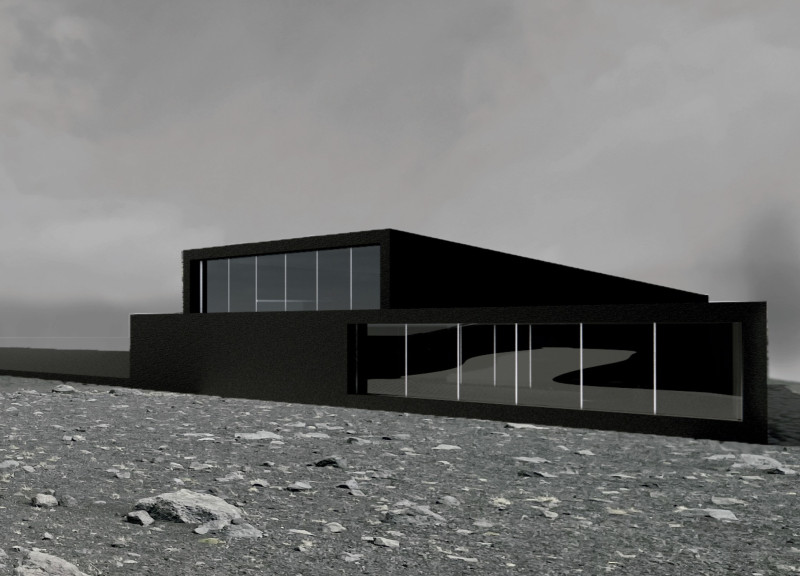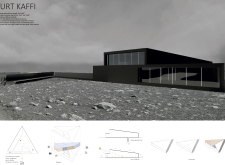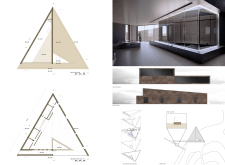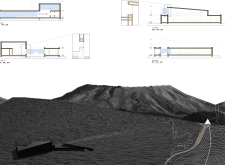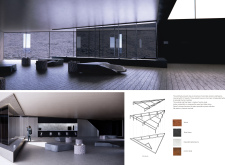5 key facts about this project
The site’s design incorporates angular, triangular forms that resonate with the geological features of the region. Large glazed sections provide ample natural light and panoramic views of the landscape, connecting visitors to the dynamic scenery. The building's material palette includes Corten steel, concrete, expanded polystyrene, slate stone, and various types of wood, each selected for its functionality and aesthetic contribution.
Sustainable design is a core principle of Surt Kaffi. By leveraging local geothermal energy for heating and utilizing locally sourced materials, the structure exemplifies an environmentally conscious approach.
Integration of Contextual Elements
One characteristic that distinguishes Surt Kaffi from other architectural projects is its response to the geological context. The triangular forms of the building reference volcanic cones, creating a dialogue with the landscape. This design approach not only enhances the visual appeal but also embodies the environmental themes prevalent in Icelandic culture. The use of Corten steel for the façade allows the building to weather naturally, developing a patina that organically connects it to its surroundings.
The interior layout promotes flexibility and comfort, with an open space design that encourages movement and interaction among visitors. Textured surfaces of wood and stone enhance the sensory experience, making it more inviting while reflecting the geological character of the site.
Unique Geothermal Energy Use
Surt Kaffi also stands out due to its innovative use of geothermal energy. This energy source is employed not only for heating but also for managing the building's overall climate. The design includes features that maximize energy efficiency, with passive solar heating techniques that reduce reliance on electrical systems. This commitment to energy efficiency aligns with contemporary architectural practices that prioritize sustainability.
For a comprehensive understanding of Surt Kaffi and its design nuances, readers are encouraged to explore the architectural plans, architectural sections, and various architectural designs, which provide deeper insights into this project. The intricate details reveal the architectural ideas that shaped Surt Kaffi, offering valuable context for those interested in contemporary architecture and sustainable design practices.


